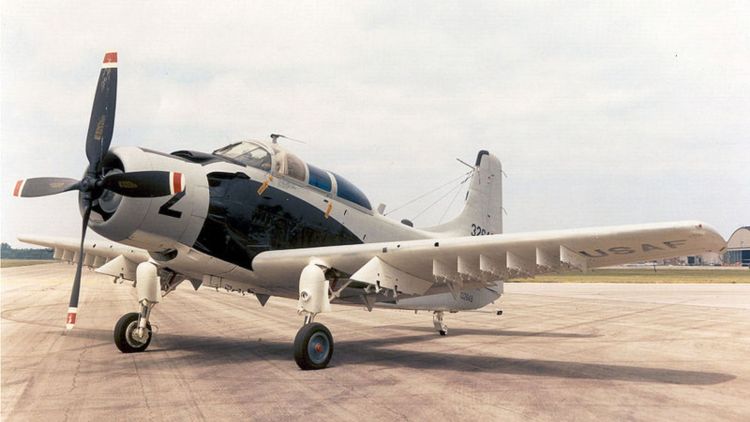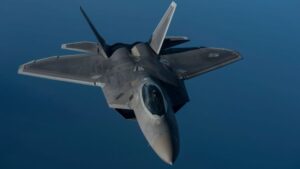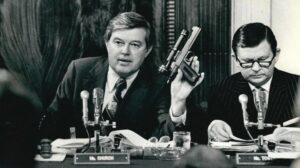In 2014, SOFREP author 14Charlie wrote a piece about a pilot friend (call-sign Rebel) who had an intriguing story to tell about his experience back when he was a young cadet at the US Air Force Academy. While the author didn’t disclose specifics about their service, Rebel’s background offers a unique perspective on the heroism of Medal of Honor recipient Major Bernard Fisher.
14Charlie highlighted how, through Major Fisher’s actions, we can learn about the courage and selflessness that defined the Air Commandos, the predecessors of today’s Air Force Special Operations Command (AFSOC). This story also sheds light on AFSOC’s rich history. Enjoy!
“Without the air support you provided, we wouldn’t have lasted one day. If you hadn’t flown at all, the Special Forces wouldn’t have blamed you. It was suicidal, but you carried out your mission anyway. I wouldn’t have done it.”
—Capt Tennis Cater, US Special Forces (Distinguished Service Cross recipient)
Today, the US Air Force Academy is a premier institution that prepares future Air Force and Space Force leaders. While it still upholds the same values and fosters exceptional airmanship and space expertise, call-sign Rebel joined the academy back then as a home to forty cadet squadrons, each with approximately 100 cadets.
His squadron, CS-37, the “Skyraiders,” had a constant reminder of heroism—a mural of Major Bernard Francis “Bernie” Fisher and his Medal of Honor.
Major Fisher, born in San Bernardino, California, in 1927, served in the Air Force after starting in the Idaho Air National Guard.
During the Vietnam War, he transitioned from interceptor aircraft to the A-1E Skyraider, flying close air support missions from July 1965 to June 1966.
In 2014, SOFREP author 14Charlie wrote a piece about a pilot friend (call-sign Rebel) who had an intriguing story to tell about his experience back when he was a young cadet at the US Air Force Academy. While the author didn’t disclose specifics about their service, Rebel’s background offers a unique perspective on the heroism of Medal of Honor recipient Major Bernard Fisher.
14Charlie highlighted how, through Major Fisher’s actions, we can learn about the courage and selflessness that defined the Air Commandos, the predecessors of today’s Air Force Special Operations Command (AFSOC). This story also sheds light on AFSOC’s rich history. Enjoy!
“Without the air support you provided, we wouldn’t have lasted one day. If you hadn’t flown at all, the Special Forces wouldn’t have blamed you. It was suicidal, but you carried out your mission anyway. I wouldn’t have done it.”
—Capt Tennis Cater, US Special Forces (Distinguished Service Cross recipient)
Today, the US Air Force Academy is a premier institution that prepares future Air Force and Space Force leaders. While it still upholds the same values and fosters exceptional airmanship and space expertise, call-sign Rebel joined the academy back then as a home to forty cadet squadrons, each with approximately 100 cadets.
His squadron, CS-37, the “Skyraiders,” had a constant reminder of heroism—a mural of Major Bernard Francis “Bernie” Fisher and his Medal of Honor.
Major Fisher, born in San Bernardino, California, in 1927, served in the Air Force after starting in the Idaho Air National Guard.
During the Vietnam War, he transitioned from interceptor aircraft to the A-1E Skyraider, flying close air support missions from July 1965 to June 1966.
(Left photo) Medal of Honor recipient Bernard Fisher. (Right photo) Fisher and Meyers after the rescue in 1965. (Wikimedia Commons)
Medal of Honor Action in Vietnam
On March 10th, 1966, a Special Forces camp in A Shau, Vietnam, was under siege by hundreds of troops from the North Vietnamese Army (NVA).
Major Fisher, then leading a squadron of Skyraiders, arrived in the middle of an intense fighting and had provided close air support.
However, the NVA had anticipated this response and meticulously fortified the surrounding mountains with anti-aircraft artillery and heavy machine gun emplacements.
The dangers of navigating this valley were tragically evident, as exhibited in an NVA attack that took place a day earlier and resulted in the loss of an AC-47D Spooky gunship and three of its crew members.
By the time Major Fisher’s flight of Skyraiders from the 1st Air Commando Squadron arrived, the camp at A Shau was already critically low on ammunition and faced imminent overrun.
Aerial image of A Shau Special Forces Camp. (File photo)
But “less than ideal” wouldn’t even begin to describe the flying conditions at A Shau.
The valley was choked by an oppressive cloud ceiling at a mere 800 feet, dwarfed by the surrounding mountains that clawed upwards to 1,500 feet. This claustrophobic environment offered a deadly advantage to the North Vietnamese.
Their anti-aircraft guns, now positioned above the cloud layer, could fire directly at the American aircraft.
Imagine the terrifying prospect of diving through a fleeting hole in the clouds, only to emerge into a gauntlet of flak – all while skirting the treacherous mountain walls on either side.
With limited avionics – no GPS, no instrument beacons – the Skyraider pilots relied solely on their skill and nerves to navigate this deadly maze.
The constant threat of enemy fire, compounded by the fatigue of days spent in relentless close air support missions, pushed these aircrews to the absolute limit.
Despite this, Major Fisher and the rest of his squad launched attack runs on the enemy anyway.
During the mission, another pilot, Major Dafford “Jump” Meyers, crash-landed his burning A-1E but managed to escape.
With no immediate helicopter support and the situation worsening, Major Fisher decided on a daring rescue.
Major Fisher’s damaged A-1E Skyraider after it crash-landed near Can Tho, South Vietnam, March 21, 1965. (Wikimedia Commons)
Daring Rescue of Jump Meyers
Knowing the risks, Major Fisher planned to land his own Skyraider at the war-torn A Shau airstrip, a mere 2,500 feet long (it was actually 2,500ft, according to Rebel, a 500-foot shorter than the published landing distance for an A-1E) and littered with debris. The slick steel surface added another layer of danger.
But none of this phased Major Fisher, who landed (or rather skidded) his aircraft anyway and taxied on the airstrip under heavy fire.
As Meyers scrambled towards the Skyraider, a flash of movement made Fisher fear the worst. Meyers seemed to falter, and in a moment of heart-stopping panic, Fisher thought he had been shot. Reacting instantly, Fisher began unbuckling himself, ready to charge out and drag his comrade to safety.
Fortunately, Meyers recovered and managed to reach the aircraft on his own. With a surge of relief, Fisher pulled him headfirst into the cockpit.
Fisher’s Skyraider remained a sitting duck under relentless NVA fire throughout the daring one-man rescue mission. Meyers made every effort to make Fisher aware of this fact, and he gave the latter a friendly reminder throughout the takeoff process.
“YOU DUMB SON-OF-A-BITCH NOW NEITHER OF US WILL GET OUT OF HERE!”
Legacy of Major Bernard Fisher
Nevertheless, Major Fisher’s bravery resulted in the safe return of his stranded wingman. His Skyraider, riddled with bullet holes, became a testament to the rescue.
The camp at A Shau was later abandoned, but Fisher’s actions embodied the spirit of “never leaving a man behind.”
Major Fisher passed away in 2014, but his heroism continues to inspire Air Force cadets.
Below is an excerpt from Major Fisher’s Medal of Honor citation for his actions that day:
“[…] Maj. Fisher’s profound concern for his fellow airman, and at the risk of his life above and beyond the call of duty are in the highest traditions of the US Air Force and reflect great credit upon himself and the Armed Forces of his country.”
14Charlie, an intel and special operations veteran, initially wrote and published this story in August 2014. You can read his version here.
—
Disclaimer: SOFREP utilizes AI for image generation and article research. Occasionally, it’s like handing a chimpanzee the keys to your liquor cabinet. It’s not always perfect and if a mistake is made, we own up to it full stop. In a world where information comes at us in tidal waves, it is an important tool that helps us sift through the brass for live rounds.



